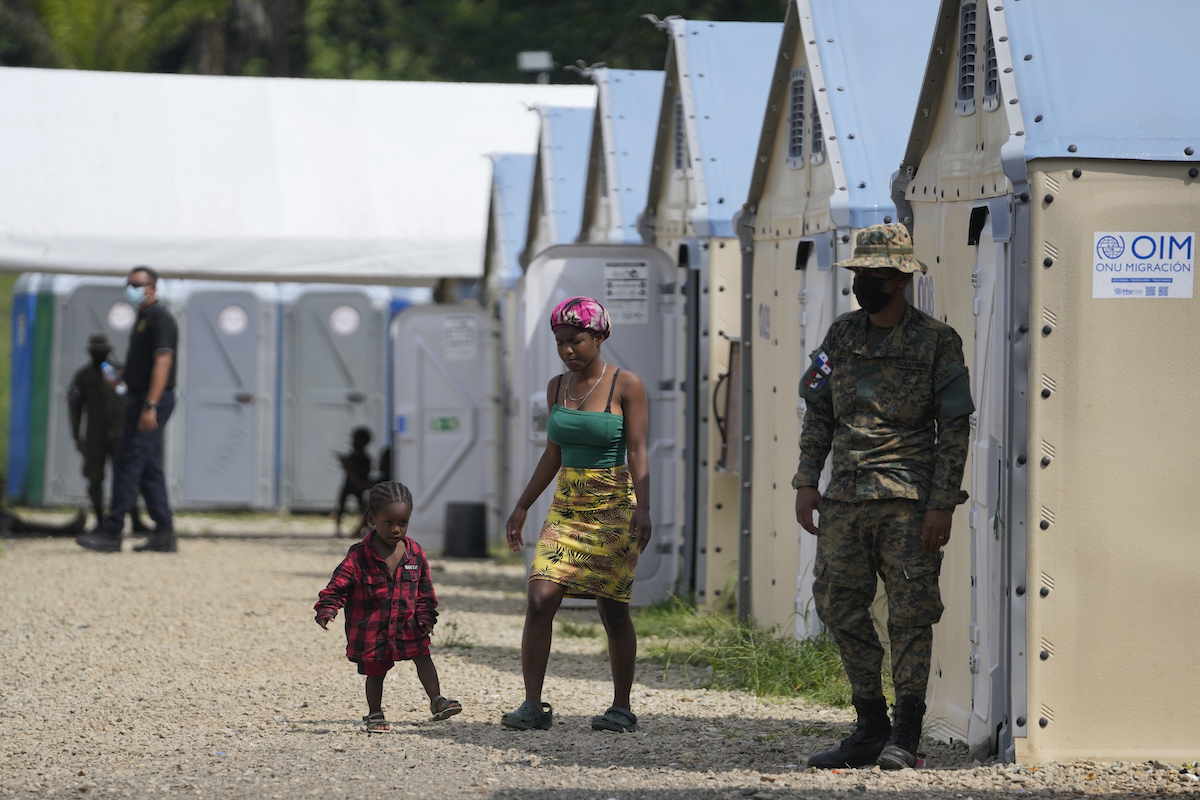

Migrants walk amid soldiers at a camp in San Vicente, Darien province, Panama, near the border with Colombia, Friday, August 6, 2021. (AP Photo/Arnulfo Franco)
By JUAN ZAMORANO, Associated Press
PANAMA CITY (AP) — The governments of Panama and Colombia agreed Wednesday to impose a daily limit on the number of migrants passing through the thickly jungled and roadless Darien Gap on the two countries’ border.
The plan aims to limit crossings to 650 migrants per day in August and 500 in September. Migrants, mainly Cubans and Haitians, use jungle paths to travel from South America to Panama, in a bid to reach Mexico and then the U.S. border. Some people from Venezuela, Africa and Southern Asia also use the route.
So far this year, Panama estimates more than 50,000 migrants have come through the dangerous Darien route, about double the number in 2018. Officials say about 16% of them are children or youths.
The director of Panama’s immigration service, Samira Gozaine, said the agreement will bring improvements.
“This is very positive for us because Panama has seen days in which we get as many as 1,500 or 2,000 migrants entering in one day,” Gozaine. “One week, we got as many as 10,000.”
An estimated 15,000 migrants are currently en route through Colombia heading for Panama.
The agreement was reached during a teleconference between officials from Panama and Colombia, in which representatives of Mexico, the United States, Brazil, Chile, Costa Rica and Peru also participated.
The two countries said they will also cooperate to prosecute criminal gangs that rob migrants and traffic drugs through the largely roadless area.
It remains to be seen how effective the agreement will be. The two countries’ efforts may lead some migrants to hike through even more difficult terrain.
At present, the most common migrant route runs from the Ecuadorian border through Colombia to the town of Necocli, where ferries carry people across the Gulf of Uraba to the even smaller border town of Capurgana, Colombia. From there, they head into the Darien Gap.
There has been a sharp rebound in the number of migrants from last year when pandemic restrictions reduced mobility for locals and migrants alike.
Panama and Colombia have depicted the limits as an attempt to ensure the migrants’ safety.
The goal is to set “a number of migrants that can be received in a safe manner on the Panamanian side,” Panama’s foreign minister, Erika Mouynes, said last week during a visit to the area.
Her Colombian counterpart, Marta Lucía Ramírez de Rincón, who also made the visit, echoed that concern, and added that ideally they do not “want them to pass through Darien, where we know there are so many risks.”
Recent rains have made the crossing even more dangerous.
“It is a really worrisome situation because if crossing the jungle during the dry season was dangerous, it is even more dangerous now,” said Santiago Paz, who works in the area for the U.N. International Organization for Migration.



I couldnt go to a place where I wasn’t wanted